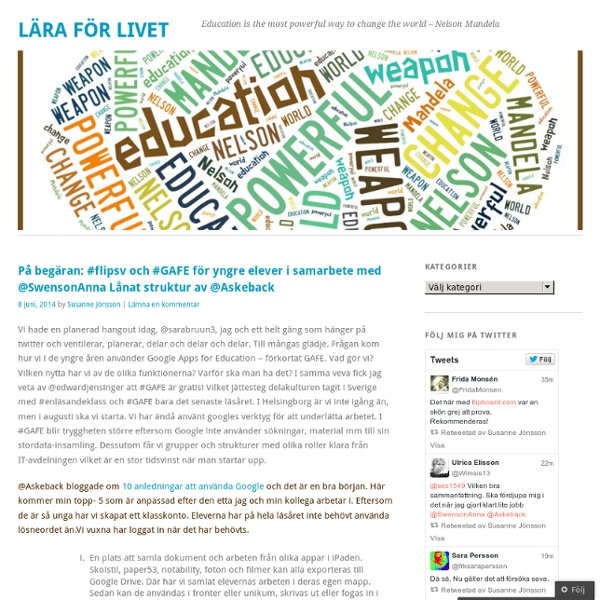På begäran: #flipsv och #GAFE för yngre elever i samarbete med @SwensonAnna Lånat struktur av @Askeback
Vi hade en planerad hangout idag, @sarabruun3, jag och ett helt gäng som hänger på twitter och ventilerar, planerar, delar och delar och delar. Till mångas glädje. Frågan kom hur vi i de yngre åren använder Google Apps for Education – förkortat GAFE. @Askeback bloggade om 10 anledningar att använda Google och det är en bra början. En plats att samla dokument och arbeten från olika appar i iPaden. Skapa en blogg. Svenska: Läs din faktatext varje dag – flera gånger Texten finns här: Matte: Se filmen om läxan här: Matteläxa repetition additionRepetera addition på Det finns många, många fler användningsområden. Dela, dela, dela…. /Susanne
How To Actually Delete your Digital Footprint
Helping students understand their digital footprint is an integral part of being a good digital citizen. Knowing that you leave behind a little trail of digital breadcrumbs as you conduct your digital life is useful - and can even help you in some scenarios (like when you need to hunt down something you remember seeing online, but don’t remember exactly where…). But what happens when you need to delete your digital footprint (or more likely, a part of your digital footprint)? Perhaps you made a few too many online faux-pas, or you’re finding too much of your personal information out there – a likely scenario for students who may not be well informed enough to not put their personal info into every site that asks! The handy infographic (via) below looks at some ways you can begin to erase yourself from the internet’s memory…at least a little bit.
Kollegialt lärande - att arbeta tillsammans
Educational Technology and Mobile Learning: 6 Things Every Teacher Should Be Able to Do on The New Google Forms
September 14, 2015 As you know, Google has recently revamped several of its Drive services including Google Forms. This latter has particularly been redesigned to incorporate several of the features that were missing in the old form. We have already written a step by step guide to help teachers learn more about the different functionalities offered by the new Forms. 1- Create a form from a spreadsheet in Google Sheets You can easily create a form right from Google Sheets. 2- Where to store form responses The new Google Forms allows you to choose between two destinations where you can save your form responses. There are three ways you can view your form’s responses: A- As a summary of responses: This one provides you with quick overview of your respondents answers. As the owner of a form, you can control how often users submit their responses. You can easily turn off the ‘ Accepting responses’ feature so your form will no longer receive any more responses. Source: Google Forms Help page.
Anne-Marie Körling
En blogg om skola, skolutveckling och samhällsfrågor | Jag heter Johan Lindström och jobbar som skolledare. Alla synpunkter i bloggen är mina egna. @Aland72 på Twitter.
Öpedagogen | Min pedagogiska reflektionsplats om digitalt lärande och annat i skolvärlden
Related:
Related:



